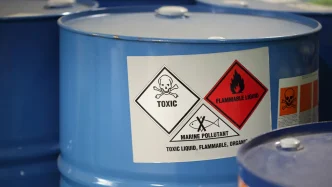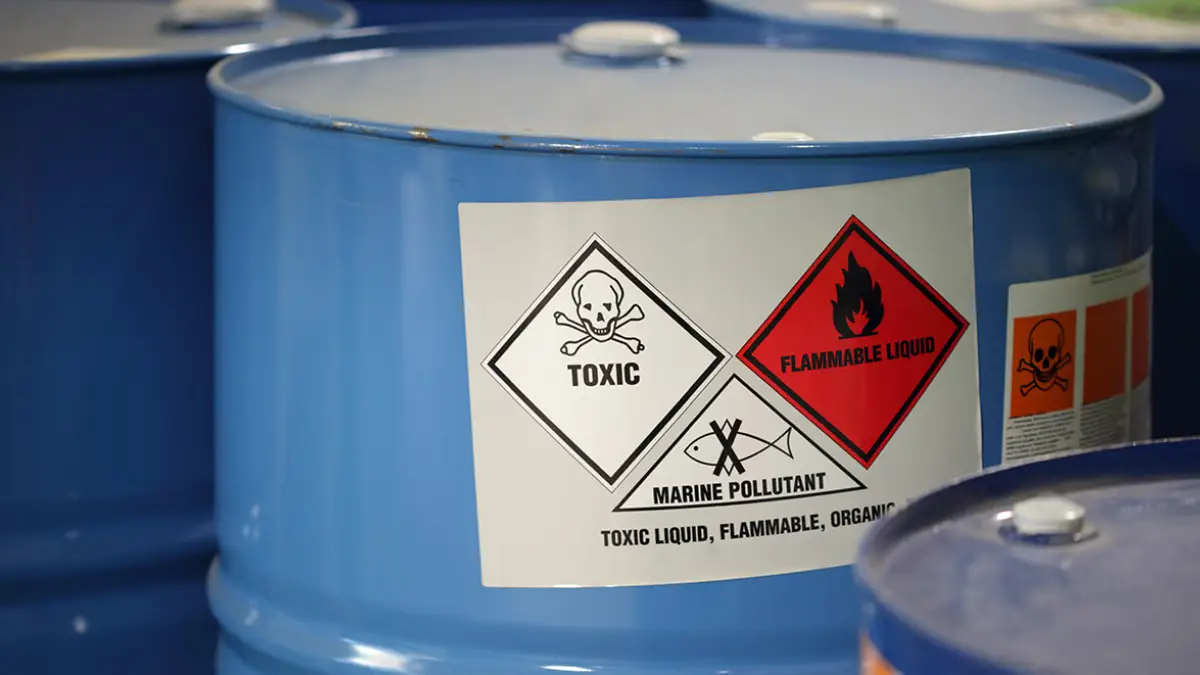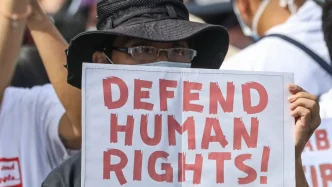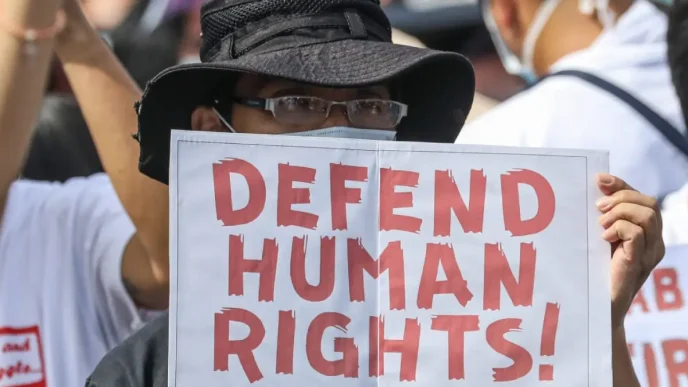Manila is grappling with a mounting environmental challenge as hazardous waste generation outpaces the country’s capacity to manage it. In 2024, the Philippines produced 269,552 tons of hazardous waste—materials like oil and toxic chemicals that pose significant risks to health and the environment—marking a 13 percent increase from the previous year, according to the latest data from the Philippine Statistics Authority (PSA). Despite efforts to expand waste management infrastructure, the growth of disposal facilities and sanitary landfills has failed to keep up, exacerbating the crisis and underscoring the urgent need for government investment and systemic reform.
A Rising Tide of Toxic Trash
The PSA figures reveal a troubling trend: while the volume of hazardous waste recorded in 2024 is among the lowest since 2015, its year-on-year growth signals a persistent challenge. Oil waste topped the list at 89,752 tons, accounting for 33.3 percent of the total hazardous trash generated. Miscellaneous waste followed at 51,765 tons (19.2 percent), with inorganic chemical waste contributing 39,438 tons (14.6 percent). Regionally, Calabarzon—comprising Cavite, Laguna, Batangas, Rizal, and Quezon—generated the lion’s share, producing 114,988 tons, or 43 percent of the national total.
Estimated Waste Generation by Region in the Philippines (2024)
This surge in hazardous waste comes as the country struggles with a linear take-make-waste economic model, where products are designed for disposal rather than reuse or durability. Marian Ledesma, a campaigner for Greenpeace Philippines, highlighted the systemic roots of the problem, stating that the increasing volume of waste—hazardous or otherwise—stems from businesses’ reliance on single-use products and the incorporation of harmful chemicals in goods and services. “The increasing volume of overall waste is the product of a linear take-make-waste system” Ledesma noted, as reported by local sources in July 2025.
Infrastructure Lagging Behind
The Philippine government has made strides in expanding waste management infrastructure, but the pace remains insufficient. In 2024, the number of material recovery facilities nationwide rose by 8.7 percent to 12,855, up from 11,823 the previous year. Sanitary landfills also increased by 14.7 percent to 343. However, these gains are overshadowed by a more alarming statistic: illegal dumpsites surged by 84 percent, reaching 79 compared to just 43 in 2023. This sharp rise points to gaps in enforcement and capacity, as unauthorized waste disposal sites proliferate faster than legal alternatives can be established.
The disparity between waste generation and infrastructure development paints a stark picture. Hazardous waste, if not properly managed, can contaminate soil, water, and air, posing long-term risks to public health and ecosystems. The inability to process this waste efficiently also increases the likelihood of cross-contamination, as hazardous materials mix with other types of refuse in overcrowded or illegal dumpsites.
Systemic Failures and Policy Gaps
The root of the crisis lies not only in infrastructure shortfalls but also in broader systemic issues. The reliance on single-use plastics and disposable products, coupled with inadequate regulation of hazardous chemicals in manufacturing, continues to drive waste volumes upward. Environmental advocates argue that without a fundamental shift in policy and corporate behavior, the problem will only worsen.
Treated Hazardous Waste by Region in the Philippines (2024, Top 5 Waste Types) – 223,118 Tons
Ledesma of Greenpeace Philippines has called for urgent action, proposing measures such as phasing out single-use plastics, banning the commercial use of harmful chemical groups, and enforcing strict segregation of waste at the source. “The latter is especially crucial to reduce organic waste from going to landfills and to avoid hazardous and organic waste from contaminating other types of waste” she explained in a statement reported by local media in mid-2025. She also emphasized that outright bans or phaseouts of disposable products and packaging could prevent waste generation at its source, offering a more sustainable path forward.
These recommendations align with broader global efforts to transition toward a circular economy, where products are designed for reuse, recycling, or biodegradability. However, implementing such changes in the Philippines faces significant hurdles, including limited funding for infrastructure, weak enforcement of existing regulations, and resistance from industries reliant on cheap, disposable materials.
Environmental and Health Implications
The consequences of inaction are far-reaching. Hazardous waste, particularly oil and chemical residues, can seep into groundwater or release toxic fumes, endangering communities near dumpsites. In regions like Calabarzon, where industrial activity is concentrated, the high volume of hazardous waste generation amplifies these risks. Residents in affected areas often bear the brunt of pollution, facing health issues ranging from respiratory problems to long-term exposure to carcinogens.
Moreover, the proliferation of illegal dumpsites exacerbates environmental degradation. These unregulated sites often lack proper containment measures, allowing waste to spread into surrounding ecosystems. Rivers, forests, and agricultural lands near such locations are particularly vulnerable, threatening biodiversity and food security in a country already grappling with climate change impacts.
Government Response and Challenges
The Philippine government has acknowledged the need for improved waste management, as evidenced by the increase in sanitary landfills and recovery facilities. Yet, the rapid growth of illegal dumps suggests that enforcement remains a weak link. Local governments, often underfunded and overstretched, struggle to monitor and shut down unauthorized sites while simultaneously expanding legal disposal options.
Policy initiatives have also been slow to address the root causes of waste generation. While laws like the Ecological Solid Waste Management Act of 2000 mandate waste segregation and recycling, implementation varies widely across regions. National programs to curb single-use plastics have gained traction in recent years, with some cities imposing bans on plastic bags and straws, but a cohesive, nationwide strategy is still lacking.
Funding poses another significant barrier. Building and maintaining waste management infrastructure requires substantial investment, yet budget allocations for environmental programs often compete with other pressing priorities like healthcare, education, and disaster response in a country frequently hit by natural calamities. International support and private-sector partnerships could help bridge this gap, but such collaborations remain limited in scope.
Public Awareness and Corporate Responsibility
Beyond government action, public awareness and corporate responsibility play critical roles in addressing the waste crisis. Educating communities about proper waste segregation and the dangers of hazardous materials can reduce contamination at the source. Grassroots movements, often supported by organizations like Greenpeace, have pushed for greater accountability from both policymakers and businesses, advocating for sustainable practices and transparency in waste handling.
Corporations, particularly those in manufacturing and retail, face growing pressure to rethink their reliance on single-use products and hazardous chemicals. Some companies have begun adopting eco-friendly packaging or reducing plastic use, but these efforts remain sporadic rather than industry-wide. Without stronger regulatory incentives or penalties, many businesses are likely to prioritize short-term profits over long-term sustainability.
Regional and Global Context
The Philippines is not alone in facing a waste management crisis. Across Southeast Asia, rapid urbanization and industrialization have led to similar challenges, with countries like Indonesia and Thailand also struggling to balance economic growth with environmental protection. Regional cooperation, such as through the Association of Southeast Asian Nations (ASEAN), could offer opportunities to share best practices and technologies for waste reduction and disposal.
Globally, the push for a circular economy has gained momentum, with initiatives like the European Union’s ban on single-use plastics serving as a potential model for the Philippines. However, adapting such policies to the local context requires careful consideration of economic realities and cultural practices, ensuring that solutions are both feasible and inclusive.
Looking Ahead: A Call for Transformation
As the Philippines confronts a growing tide of hazardous waste, the path forward demands a multi-pronged approach. Infrastructure investment must be prioritized, alongside stricter enforcement against illegal dumping and comprehensive policies to curb waste at its source. Collaboration between government, industry, and civil society will be essential to drive systemic change, moving away from the take-make-waste model toward a more sustainable future.
The stakes are high, not just for the environment but for the health and livelihoods of millions of Filipinos. As the volume of hazardous waste continues to rise, the question remains: can the country act swiftly enough to avert a deeper crisis, or will the burden of inaction fall on future generations?
















